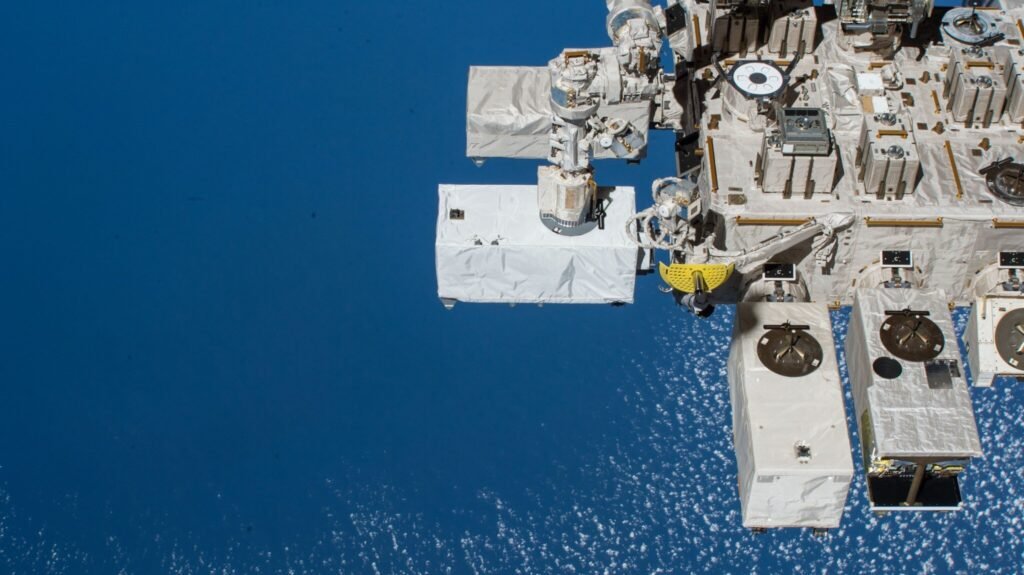The Ecostress device on the International Space Station. Courtesy of NASA.
Aboard the International Space Station, researchers are making advances in everything from Earth science to chemical characterization. Learn what they’re working on and why it’s important.
Recently, researchers have found that swirling wind patterns increase water evaporation in alfalfa fields. A better understanding of the complex exchange of water and heat between the ground and the atmosphere could improve remote sensing products and their use in agricultural water management.
The station’s ECOSTRESS instrument makes high-resolution thermal infrared measurements of the Earth’s surface, providing data on changes in water availability, vegetation water stress, and agricultural water use. Researchers use observations from the USGS Landsat 8 and 9 satellites and ECOSTRESS to validate climate models and update data on the Earth’s surface energy (the amount of energy absorbed from the Sun and radiated into the atmosphere).
ECOSTRESS data shows evaporative stress on agricultural fields in California’s San Joaquin Valley. Credit: NASA
Characteristics of flow boiling
Researchers have identified various properties of flow boiling with n-perfluorohexane, a fluid used to cool electronic devices. A better understanding of this process can lead to improved models for designing thermal cooling systems for use in industries including electronics, energy, and aerospace.
Flow boiling, a thermal management method, uses heat generated by the device to boil a liquid, creating vapor bubbles that lift heat away from the surface. The Flow Boiling and Condensation Experiment (FBCE) tested flow boiling in microgravity, where the process is less efficient and the lack of buoyancy causes the bubbles to grow larger and remain closer to the surface.
NASA astronauts Mark VandeHei and Kayla Baron prepare for the Flow Boiling and Condensation Experiment. Courtesy of NASA
New radiation-resistant polymers
The researchers have succeeded in producing polymers of rare metals and other elements that are highly radiation resistant and have a size and weight suitable for use in space, providing knowledge that will help develop improved shielding materials for future spacecraft and extraterrestrial habitats.
Roscosmos’ shielding composites study tested the absorbed radiation dose of two polymers over 225 days on the space station, using monthly monitoring from the Pire-ISS survey. Data showed that the material has advanced and stable radiation shielding properties. Protecting crew and equipment from radiation is a key requirement for future long-duration space missions.
Source: Research abounds on the International Space Station (September 24, 2024) Retrieved September 24, 2024 from https://phys.org/news/2024-09-abounds-international-space-station.html
This document is subject to copyright. It may not be reproduced without written permission, except for fair dealing for the purposes of personal study or research. The content is provided for informational purposes only.

